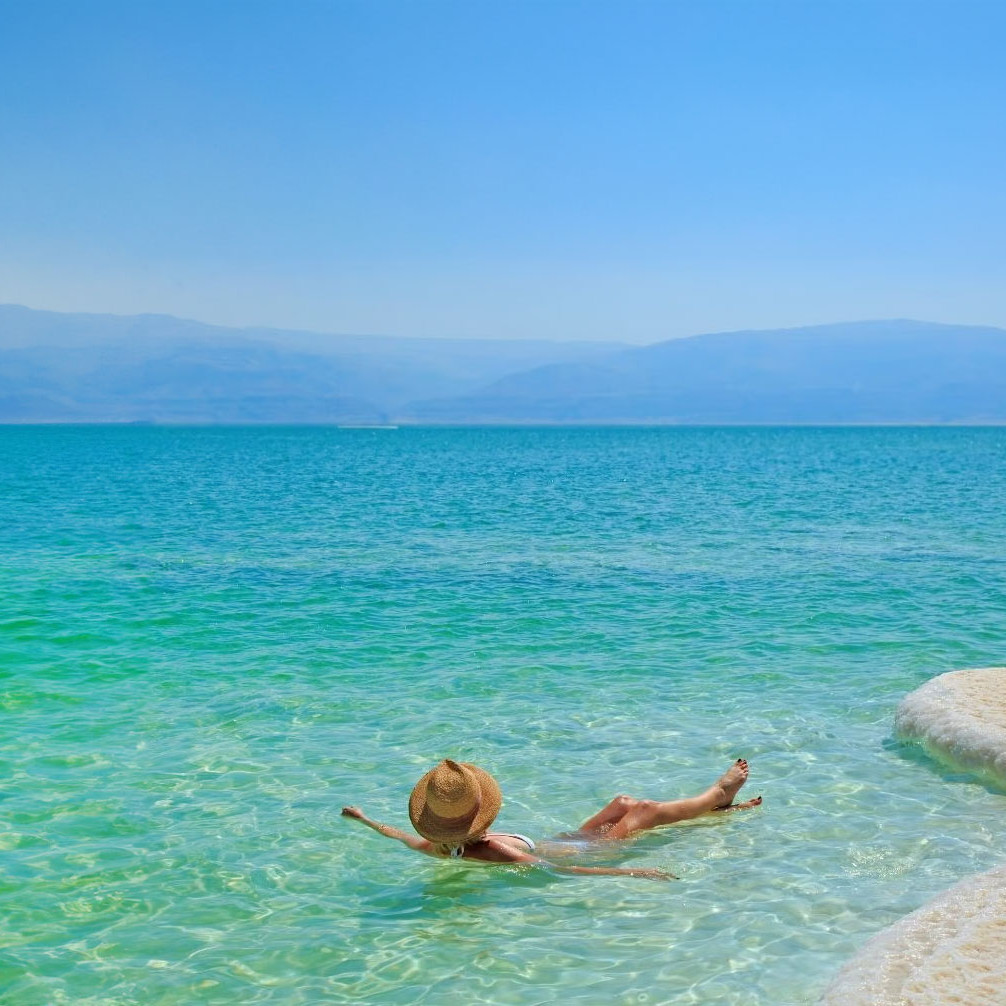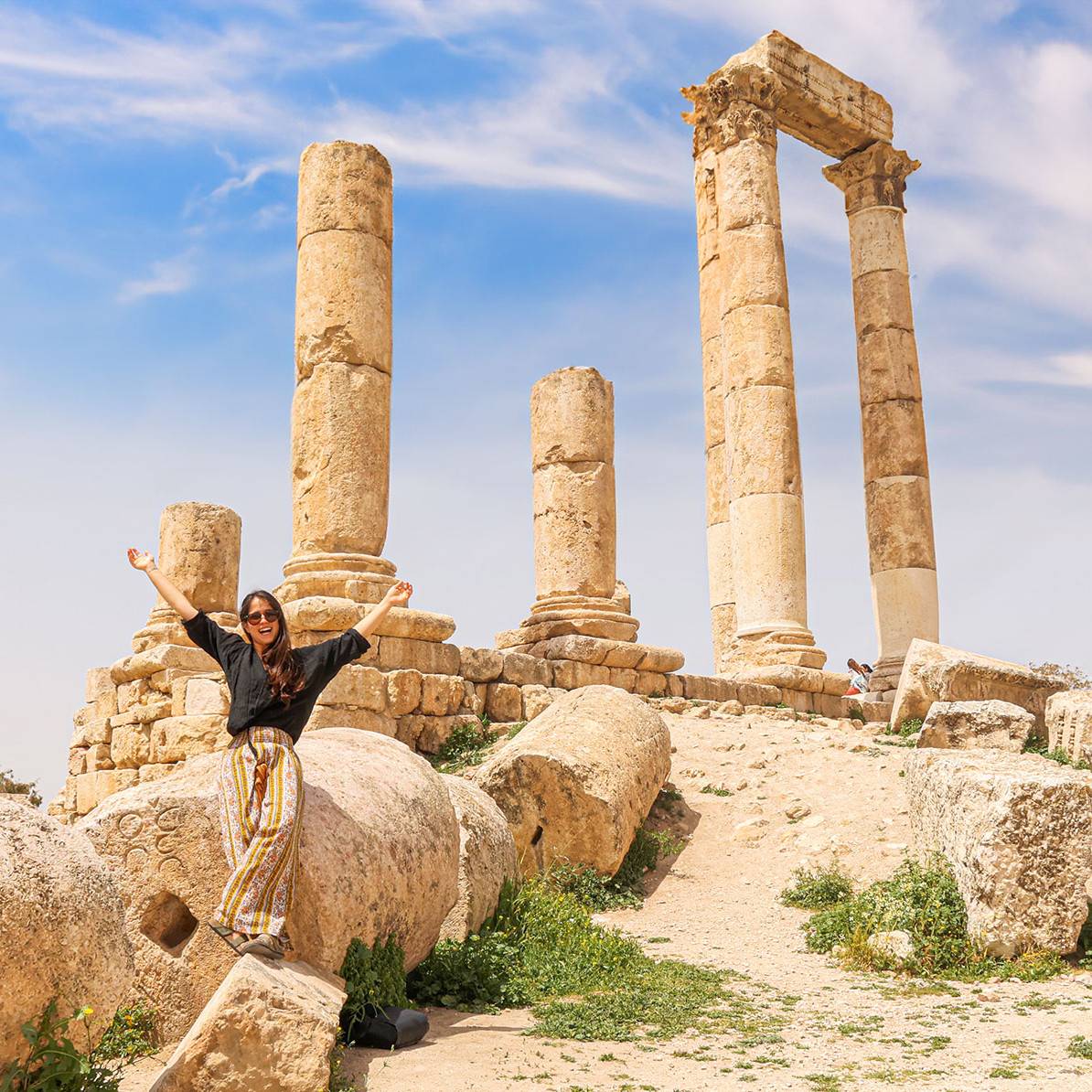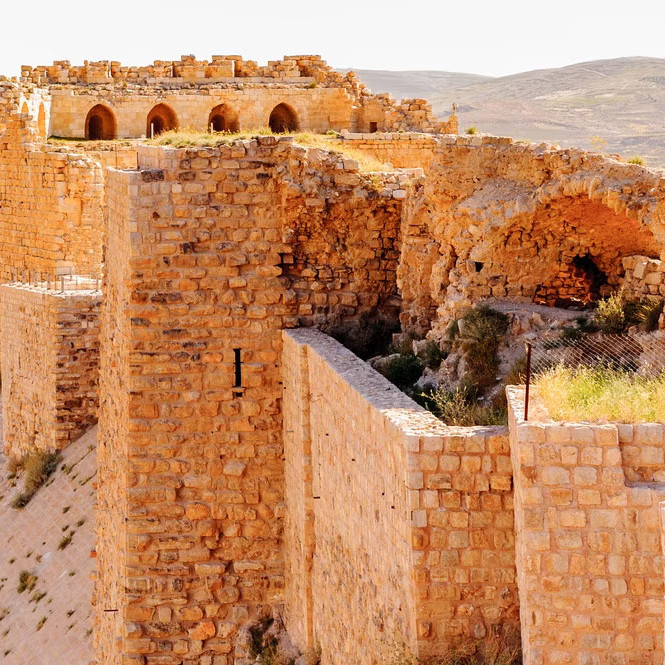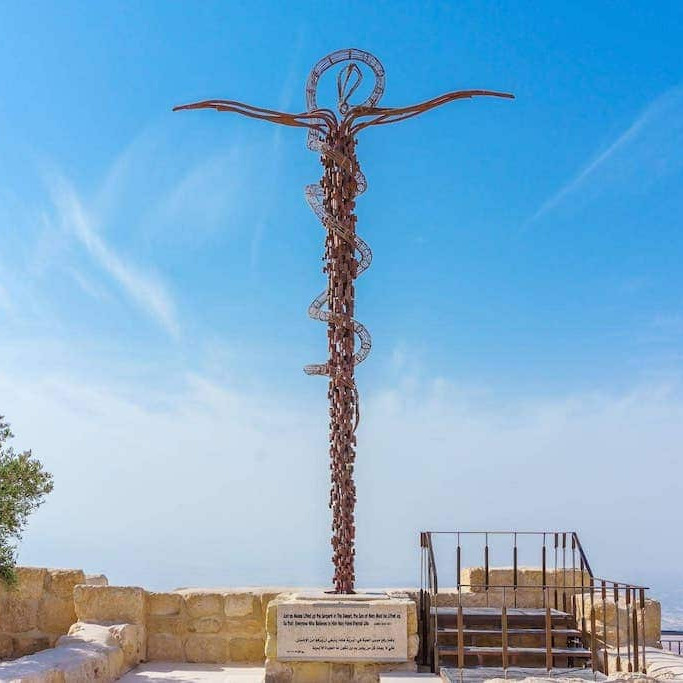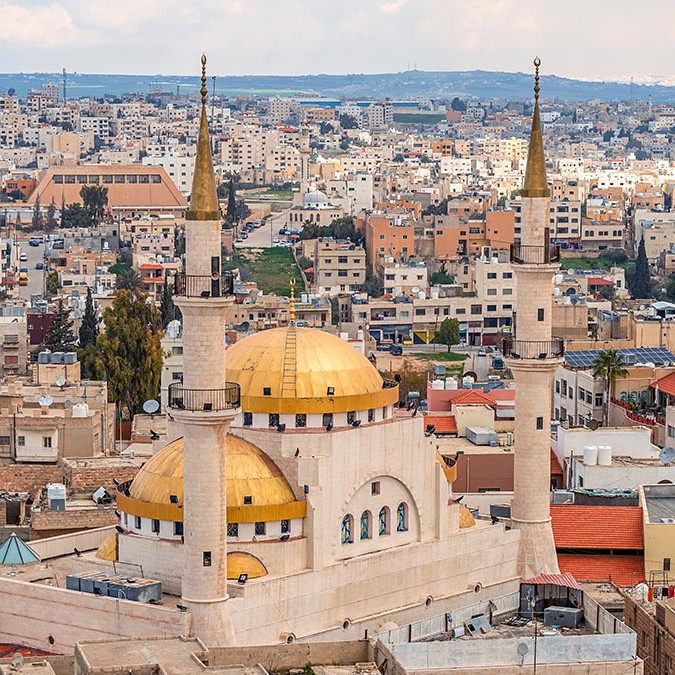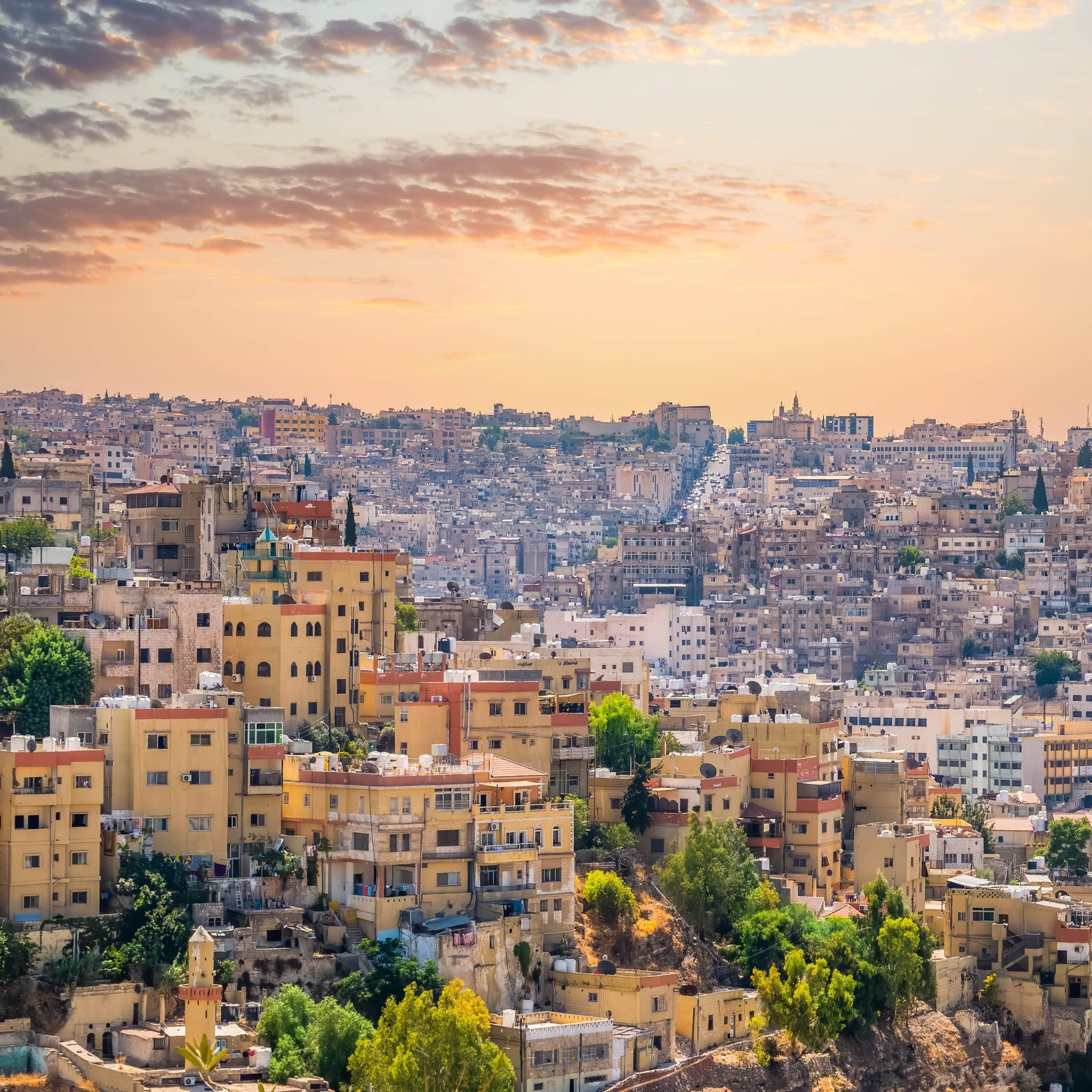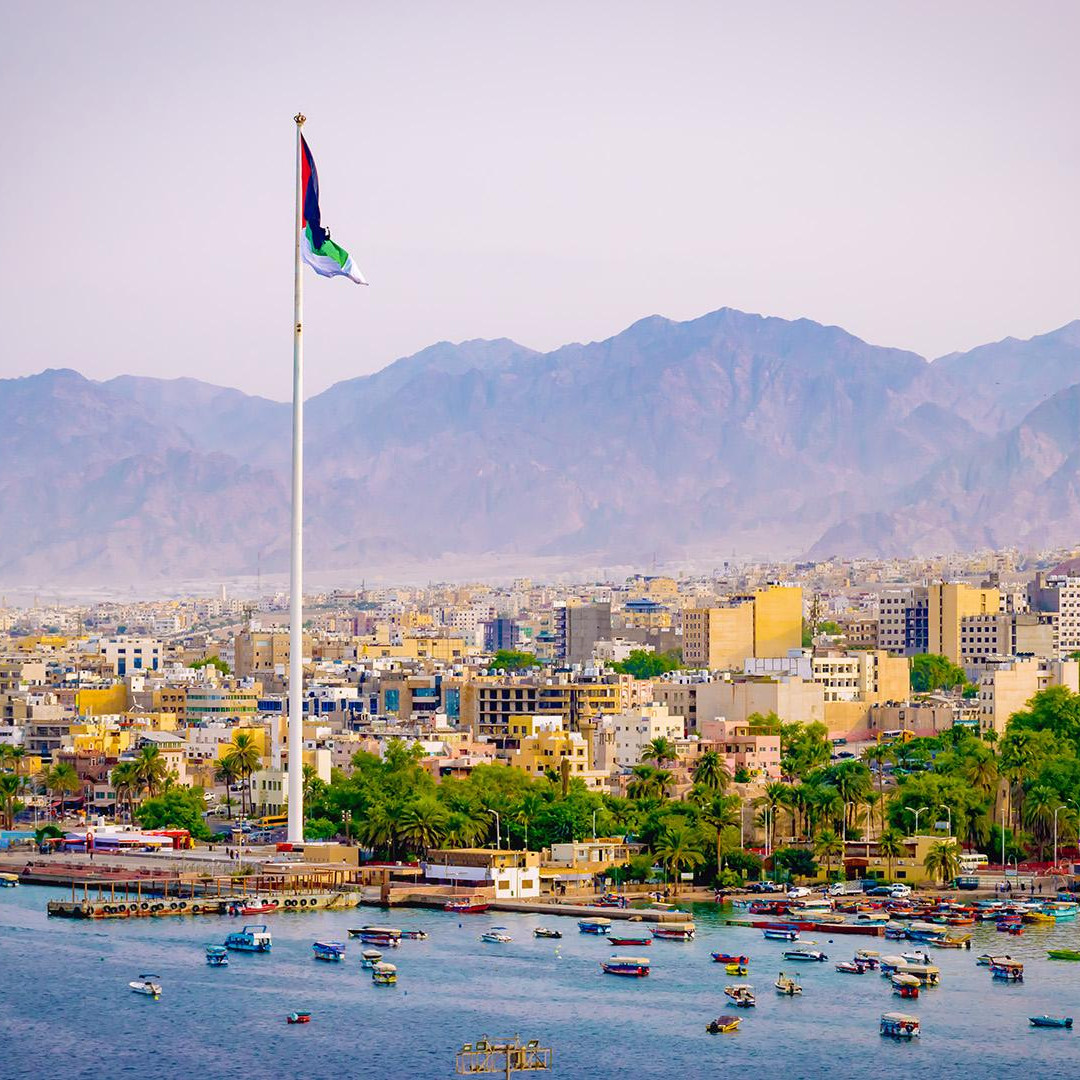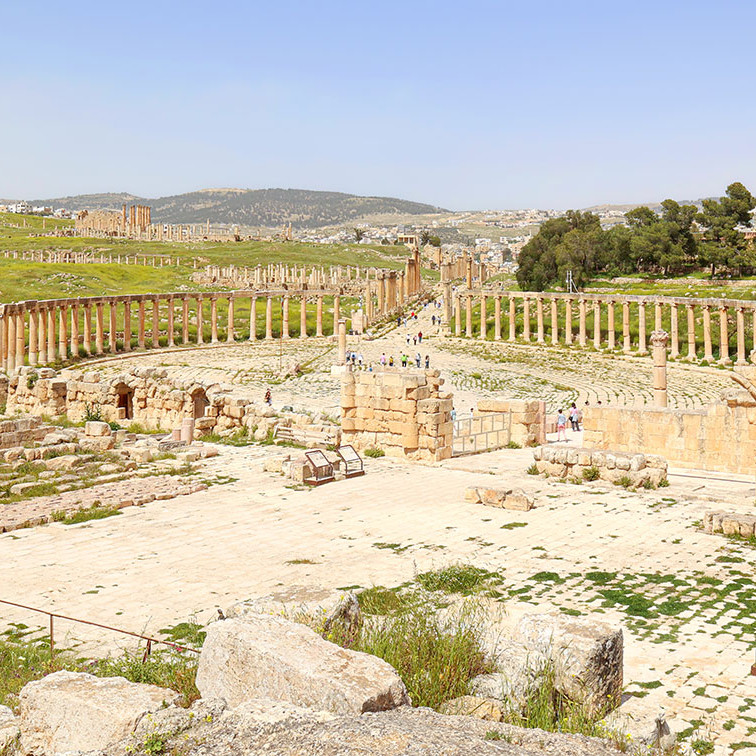Petra
Petra, Jordan’s legendary rock-cut city, is a fascinating destination for travelers in search of history and architectural wonders. Known as the “rose city” for the unique color of its cliffs, it is an archaeological treasure that combines eastern and western elements. Founded as a funerary city by the Nabataeans, it became a prosperous trading center between Arabia and the Mediterranean, flourishing as a wealthy and prosperous city thanks to its strategic location on trade routes.
When I first visited petra, I was under the impression that it was just 1 structure, (The Treasury) based on my ignorance the many pictures I had seen online. My research and experience there made me realize Petra is in reality an actual city, with many things to see. The city itself covers 102 square miles (264 square kilometers), which is roughly the size of 50,000 football fields or four times the size of Manhattan. I made the mistake of just allocating one day for it, and I missed some stuff, even tho I walked non-stop. I would recommend to allocate at least 2 full days to discover the ancient city in full. A guide would also be recommended (you can hire them at the location), as they can explain you in detail each structure and ruins.
History of Petra
Petra’s history dates back centuries, established as early as the 4th century BCE by the Nabateans, a nomadic Arab tribe, when they carved tombs, tunnels, dams and canals into the red sandstone of the desert. Petra flourished as a bustling trade hub due to its strategic location along major caravan routes linking Arabia, Egypt, and the Mediterranean. The Nabateans harnessed their engineering prowess to construct an intricate network of water channels and reservoirs, enabling the city to thrive in the arid desert environment. Petra’s remarkable architecture, exemplified by the iconic Treasury (Al-Khazneh) and the Monastery (Ad-Deir), showcases the blend of Hellenistic and Eastern influences. Over centuries, Petra faced conquest by the Romans and later the Byzantines, leading to a gradual decline and eventual obscurity.
Although only 15% of this “lost city” has been discovered, 85% remains underground and intact, offering an archaeological mystery to discover. Rediscovered in 1812 by Swiss explorer Johann Ludwig Burckhardt, Petra is now celebrated as a UNESCO World Heritage Site, and Petra has been one of the New Seven Wonders of the World since 2007.
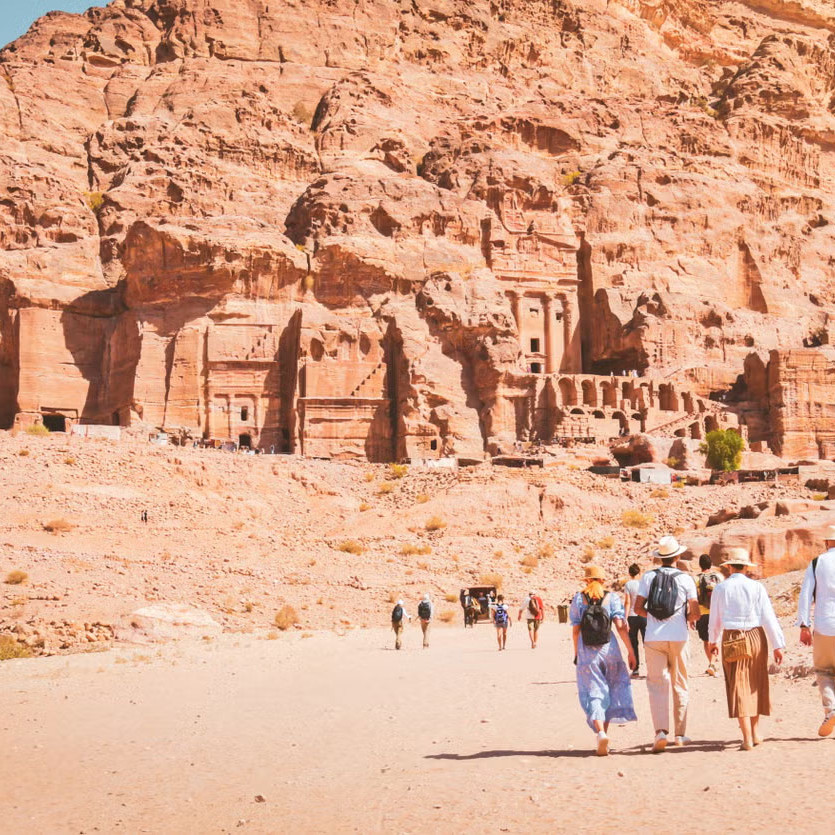
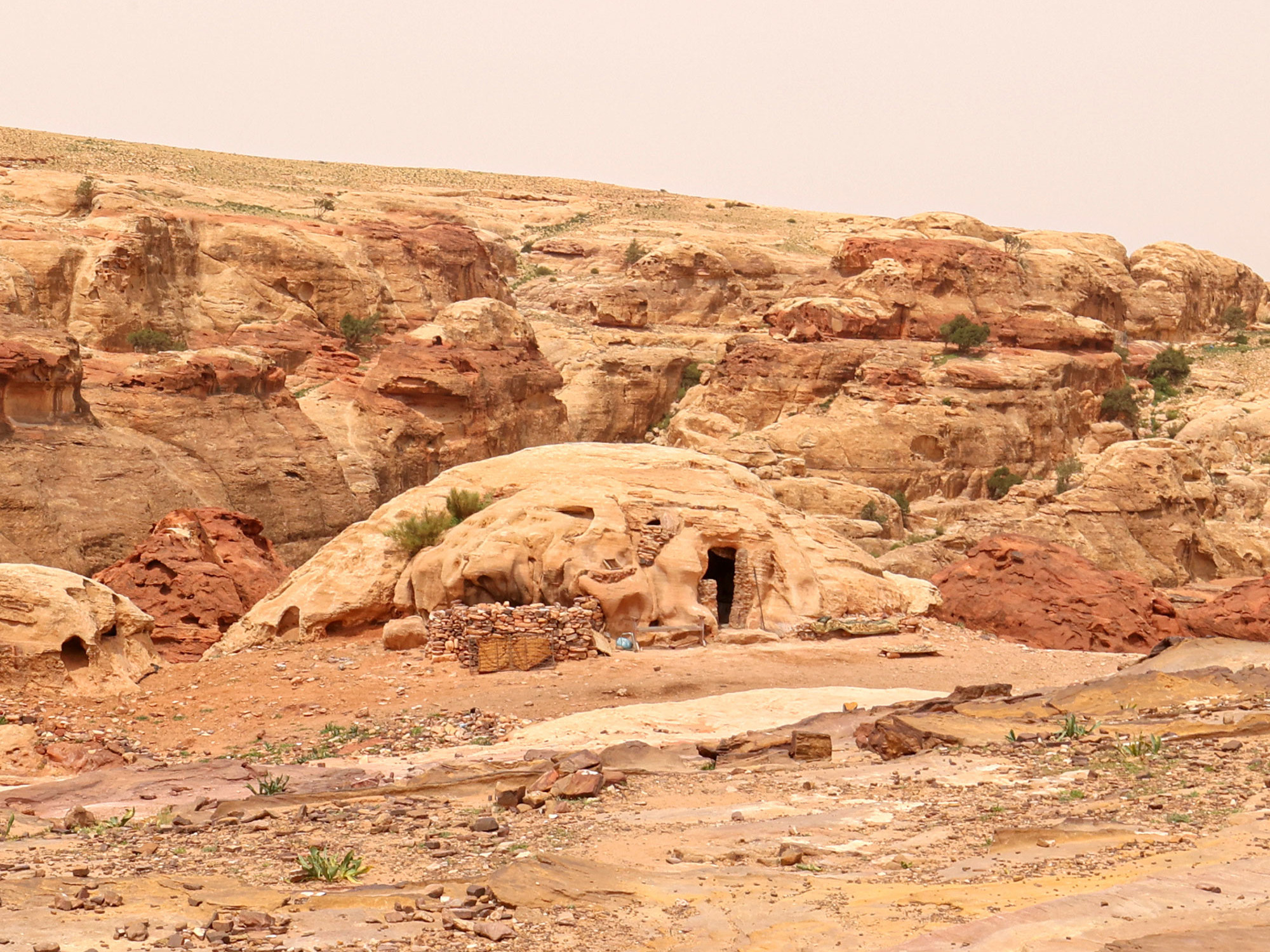
Does someone still lives in Petra?
Today, the ancient city of Petra is primarily an archaeological site and no longer serves as a residential area. However, the surrounding region is home to the Bedouin communities, particularly the B'doul tribe, who have historical ties to Petra. Many Bedouins were originally cave dwellers in Petra, living in the rock-cut tombs and structures until the 1980s when the Jordanian government relocated them to the nearby village of Umm Sayhoun to preserve the site. Despite this relocation, the Bedouins maintain a strong connection to Petra, often working as guides, craftsmen, and vendors, sharing their rich cultural heritage and stories with visitors while ensuring the preservation and continuation of their ancestral traditions.
When to Visit Petra
The best time to visit Petra is during the spring (March to May) and autumn (September to November) months when the weather is mild and pleasant. During these seasons, temperatures are comfortable for exploring the ancient city, with daytime highs averaging around 20-25°C (68-77°F) and cooler evenings. Additionally, the landscape blooms with wildflowers during spring, adding to the picturesque scenery. Avoid visiting during the scorching summer months (June to August) when temperatures soar, often exceeding 40°C (104°F), making outdoor activities uncomfortable and potentially dangerous. Likewise, winters (December to February) can be chilly, especially in the early mornings and evenings, although daytime temperatures are still suitable for sightseeing. Ultimately, choosing the right time to visit Petra depends on your preferences for weather and crowds, but the spring and autumn months offer the most enjoyable experiences for exploring this ancient wonder.
How long to visit petra for
The ideal duration for visiting Petra depends on your interests and travel style. For a comprehensive exploration of the site, including its main monuments and hiking trails, plan to spend at least two full days in Petra. This allows ample time to visit iconic landmarks such as the Treasury, the Monastery, and the Royal Tombs, as well as to hike the scenic trails to viewpoints like the High Place of Sacrifice and the Al-Khubtha Trail. Additionally, taking time to wander through the lesser-known areas and interact with local Bedouin guides can enrich your experience. However, if you have limited time, it’s still possible to see the highlights of Petra in a single day, (like I did) albeit with a more condensed itinerary.
Where to stay in Petra
Where to stay in Petra will depend on how long you are planning to stay. In my case, I only stayed for a day, so I came from Amman and then move on to Wadi run. In case you are thinking on exploring Petra for more than a day, Wadi Musa, which is the town around petra, offers many hotels for all kind of budgets. For a unique experience, consider staying at a Bedouin camp.
Should I get a guide?
While visiting Petra, hiring a guide can greatly enhance your experience and understanding of the site. Guides are knowledgeable about the history, culture, and significance of Petra, and they can provide valuable insights and context as you explore the ancient city. They can also help navigate the complex maze of trails and monuments, ensuring you don’t miss any highlights. Additionally, guides can share local stories, legends, and anecdotes that add depth to your visit. However, whether or not to hire a guide ultimately depends on your preferences, budget, and level of interest in learning about Petra’s history. If you prefer to explore independently, Petra is well-signposted, and information is readily available at visitor centers and on-site plaques.
How much does it cost to enter petra?
The entrance fee for a one-day visit to Petra for foreign tourists is around 50 Jordanian Dinars (JOD), which is approximately 70 USD. However, the ticket prices can change, so it’s advisable to check the latest rates before planning your visit. Additionally, there are other ticket options available, including a two-day pass and a three-day pass, which may offer better value if you plan to spend more time exploring Petra. Furthermore, if you purchase the Jordan Pass, which includes entry to many tourist sites across Jordan, including Petra, your entry fee to Petra will be included.
You can get your Jordan pass here.
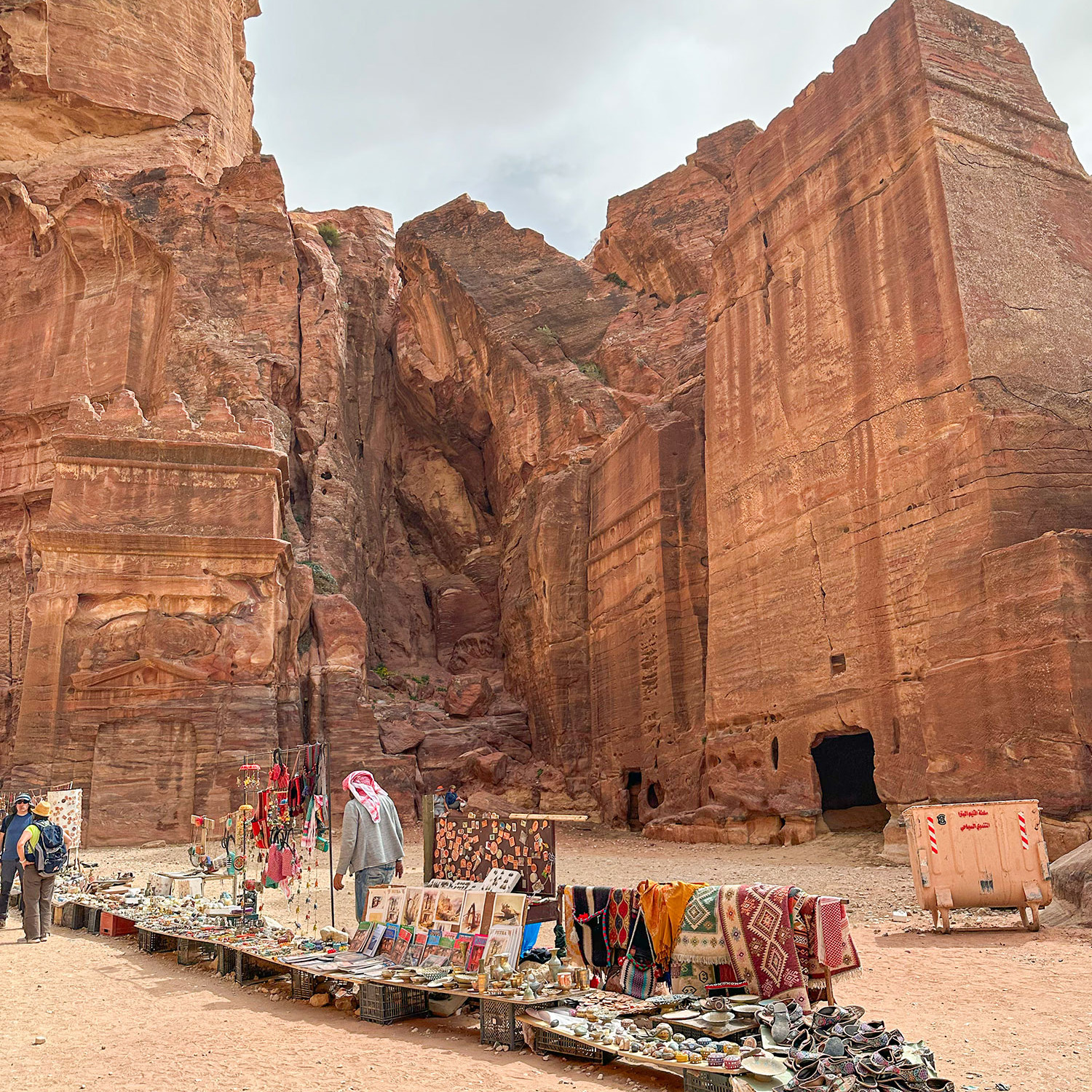
What to bring to Petra
You can find many vendors in petra, selling stuff from water, sodas, tea and snacks to souvenirs and crafts. Just please keep in mind, it might be a bit more expensive than in other places, as it is mostly for tourist visiting the city.
Besides that, I would recommend bringing sturdy and comfortable walking shoes are a must for navigating the varied terrain, from rocky paths to steep ascents.
Also, given the Jordanian sun’s intensity, sun protection is essential, including sunscreen, a hat, and. Don’t forget your camera or smartphone.
Cash is handy for purchasing stuff or tipping guides, as most places won’t take credit cards.
What to wear in Petra
Although we talked about the modest dress code for Jordan, Petra is so full of tourists and so hot than most people don’t care about this when they are visiting. I saw everything from people walking all covered up to tourist wearing shorts and short sleeve shirts. In my case, I wore pants and a short sleeve shirt to petra. I would recommend to dress light and comfortably as you are going to be walking a bit deal under the sun, without exposing too much.
Still got questions? Check our what to wear in Jordan guide!
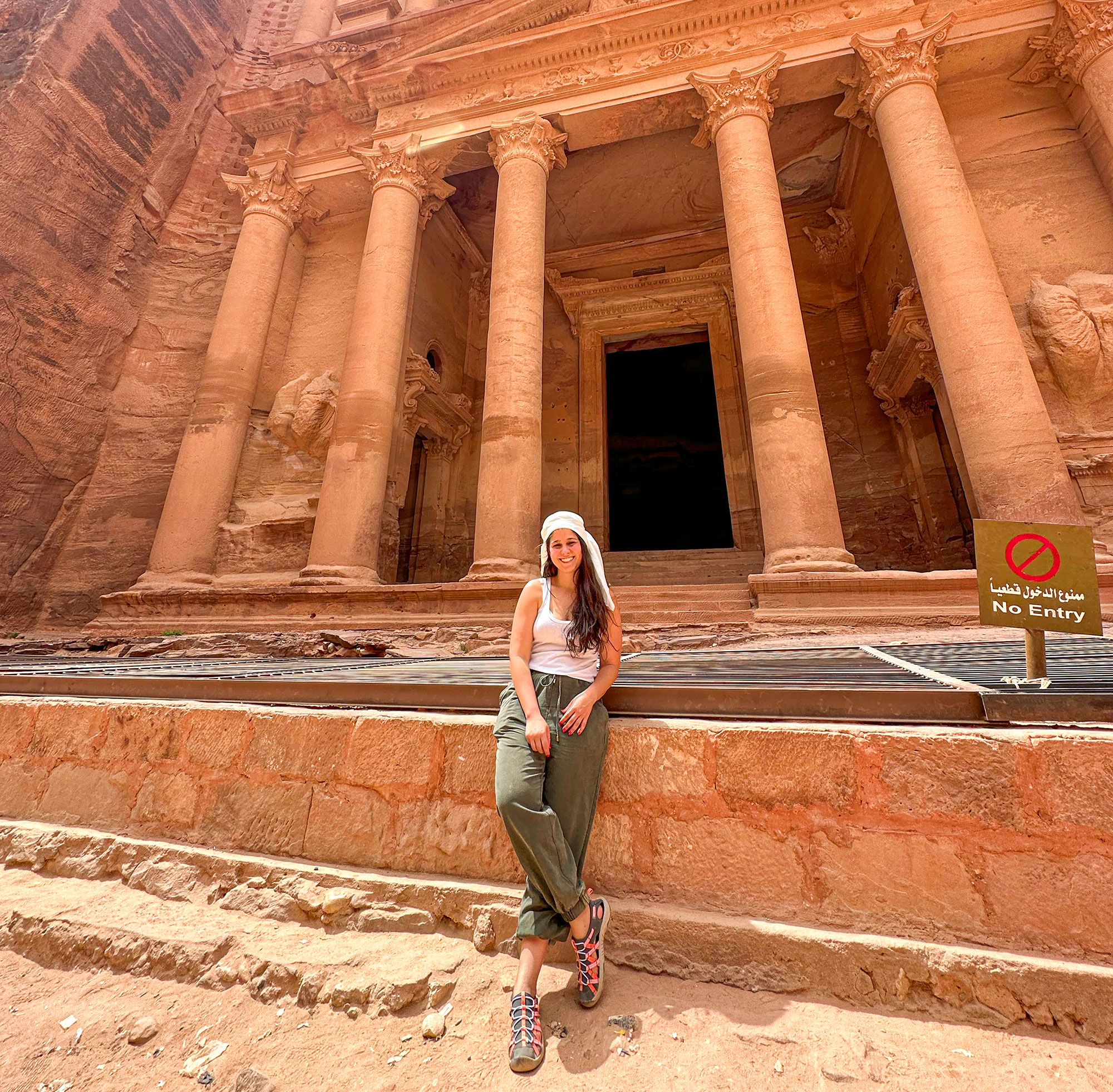
Places to see in Petra
Below I’m explaining some of the most important things to see in Petra. Please keep in mind, this does not cover everything.
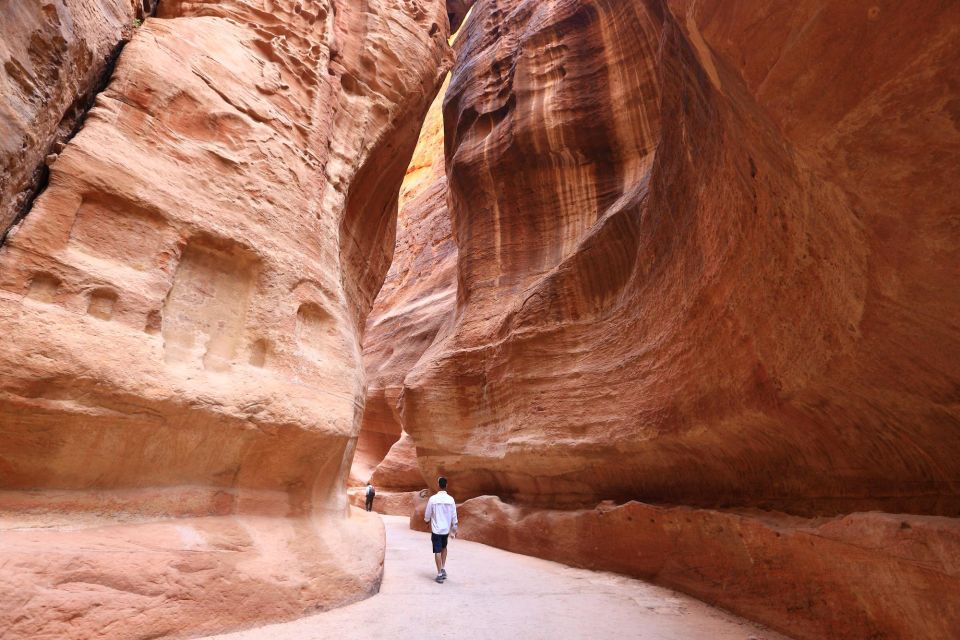
The Siq
The Siq in Petra is a mesmerizing, narrow gorge that serves as the dramatic entrance to the ancient Nabatean city. Stretching for about 1.2 kilometers (0.75 miles), the Siq is flanked by towering sandstone cliffs that rise up to 80 meters (262 feet) high. Walking through the Siq is an awe-inspiring experience as its winding path reveals beautiful rock formations, ancient carvings, and remnants of water channels. The journey culminates in a breathtaking view of Al-Khazneh (The Treasury), Petra’s most iconic monument, suddenly emerging through the narrow opening at the end of the gorge, leaving visitors with an indelible first impression of this UNESCO World Heritage Site.
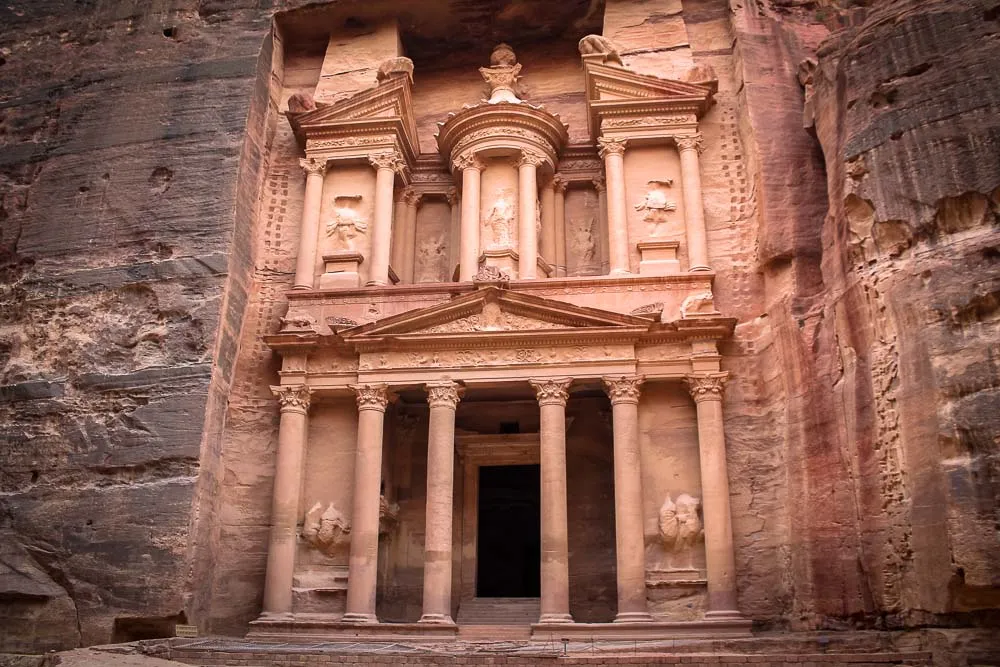
The Treasury
The Treasury, or Al-Khazneh, is Petra’s most iconic and stunning monument, renowned for its impressive architectural beauty and historical significance. Carved directly into the rose-red sandstone cliff face, this majestic structure stands at approximately 39 meters (128 feet) high and 25 meters (82 feet) wide. Originally built as a royal tomb in the 1st century AD, the Treasury showcases a blend of Hellenistic and Nabatean architectural styles, featuring intricate Corinthian columns, statues, and detailed friezes. The site’s allure is heightened by its dramatic location, revealed in full splendor as visitors emerge from the narrow Siq. This awe-inspiring façade, bathed in the soft light of the Jordanian sun, leaves an enduring impression on all who visit.
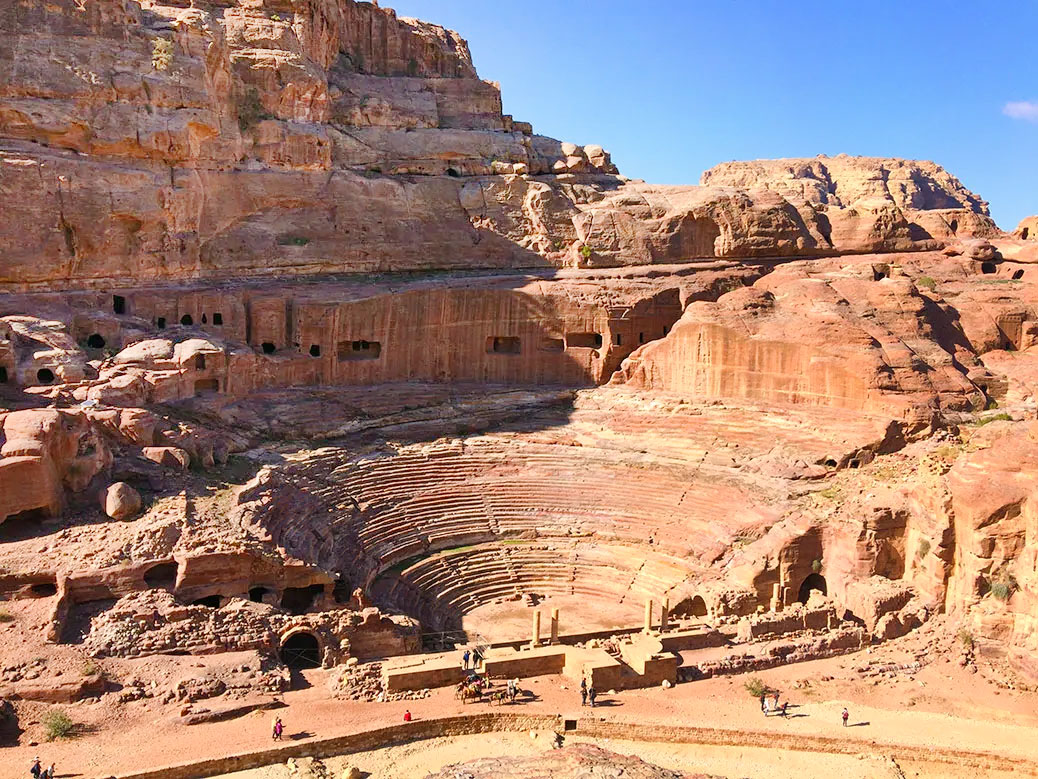
The theather
The theater in Petra is a remarkable testament to the city’s ancient grandeur and the ingenuity of the Nabateans. Carved directly into the rock face during the 1st century AD, the theater could accommodate around 8,500 spectators, reflecting Petra’s significance as a thriving cultural hub. Its design showcases a blend of Nabatean and Roman architectural influences, (although it was built by the Nabateans, not the roman) featuring a semi-circular auditorium, tiered seating, and a central stage. The location of the theater, nestled among the rose-red cliffs and surrounded by other monumental tombs and structures, offers a dramatic backdrop, enhancing the historical ambiance of this ancient entertainment venue. Today, the theater remains a captivating highlight for visitors, illustrating the vibrant social and cultural life of Petra’s past.
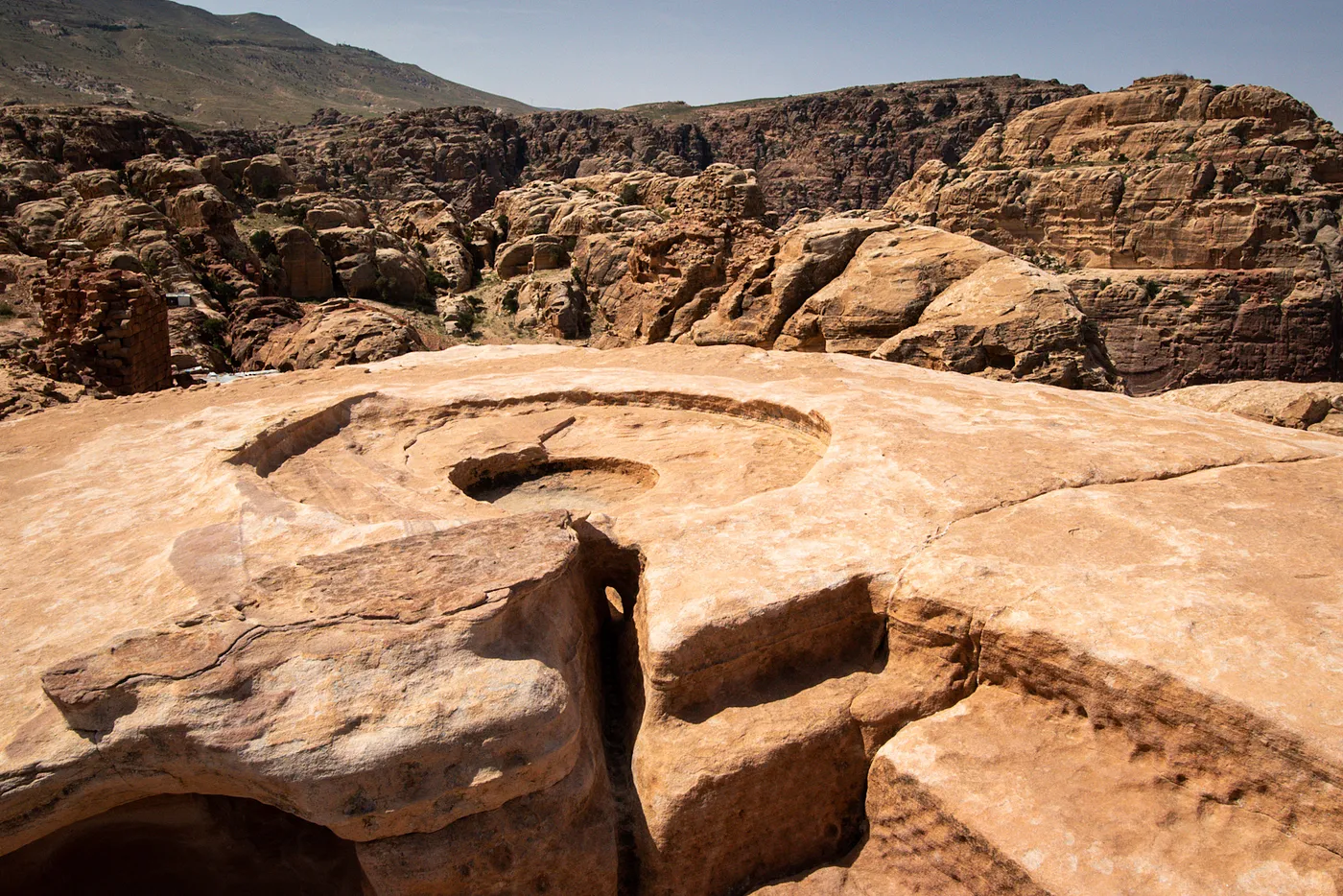
High Place of Sacrifice
The High Place of Sacrifice in Petra is one of the ancient city’s most significant and evocative religious sites. Perched atop Jebel Madbah, this sacred platform can be reached by a steep climb of over 800 steps, offering stunning panoramic views of Petra and its surrounding landscapes. Dating back to the 1st century BC, the site was used by the Nabateans for ceremonial rituals, including animal sacrifices. The High Place of Sacrifice features two obelisks, believed to represent the Nabatean gods Dushara and Al-Uzza, and a large altar with a carved basin for collecting blood. The combination of its historical significance and breathtaking vistas makes the High Place of Sacrifice a highlight for visitors seeking to explore Petra’s rich cultural and spiritual heritage.
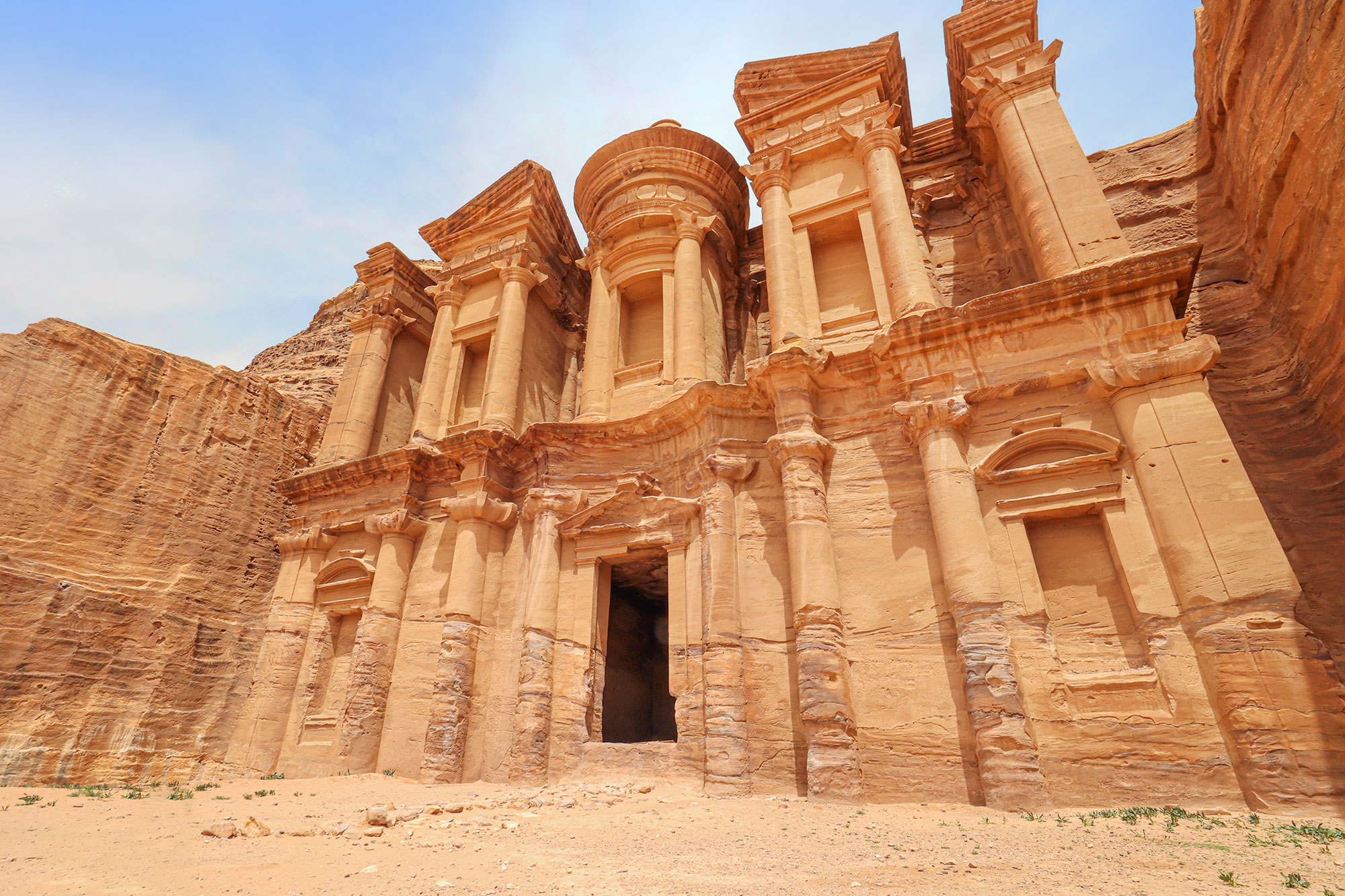
The Monastery
The Monastery, or Ad-Deir, is one of Petra’s largest and most awe-inspiring monuments, rivaling even the famed Treasury in grandeur. Carved into the sandstone cliffs in the 3rd century BC, the Monastery stands at approximately 50 meters (164 feet) high and 45 meters (148 feet) wide. Its impressive façade features a large central doorway flanked by columns and decorative elements that reflect a blend of Hellenistic and Nabatean architectural styles. Reaching the Monastery requires a strenuous climb of about 800 steps, but the effort is rewarded with breathtaking views of the surrounding mountains and valleys. Once believed to be a Nabatean tomb, the site later served as a Christian monastery, adding to its historical and cultural significance.
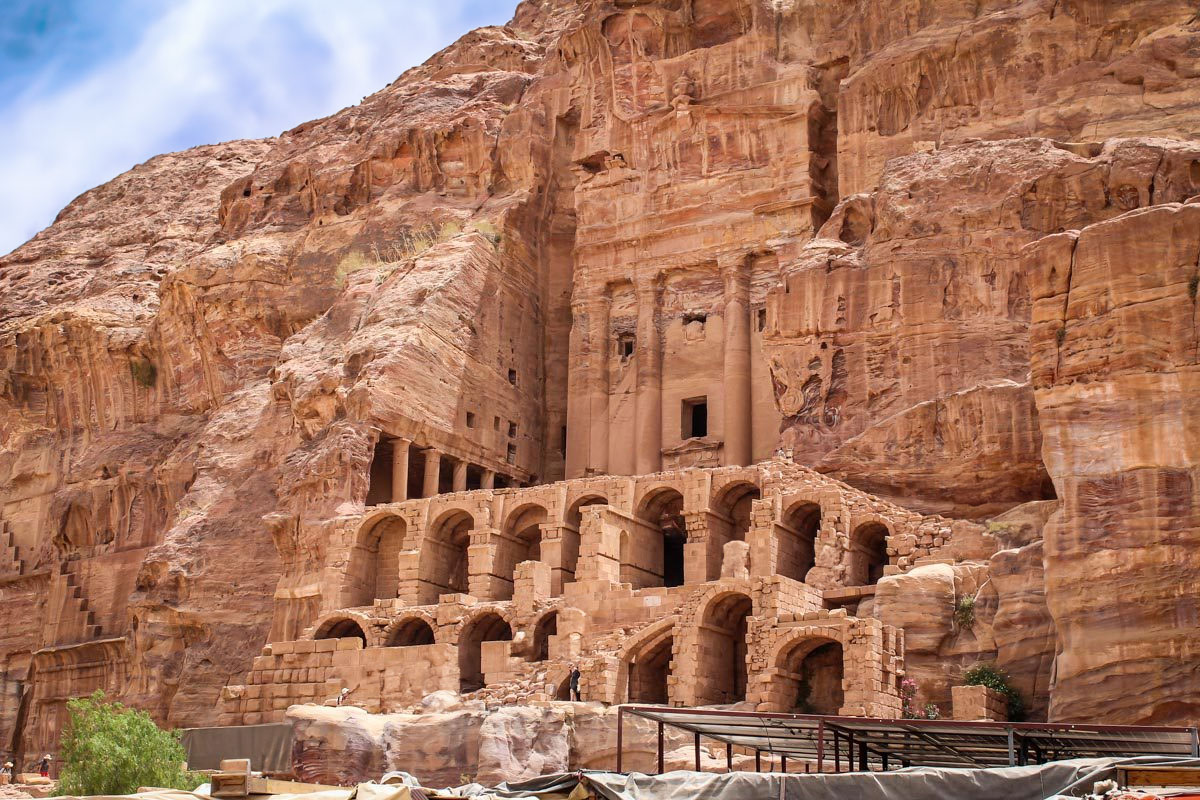
Urn Tomb
The Urn Tomb in Petra is one of the most striking and well-preserved royal tombs, renowned for its grand architectural design and historical significance. Constructed in the 1st century AD, it is named after the large urn that adorns the top of its façade. The tomb is carved into the cliff face and features an imposing colonnaded terrace, a large central chamber, and a series of smaller rooms that once served various ceremonial purposes. Its elevated position provides a commanding view of the Petra valley, enhancing its majestic presence. The Urn Tomb was later repurposed as a Byzantine church in the 5th century AD, adding another layer of historical depth to this remarkable monument.
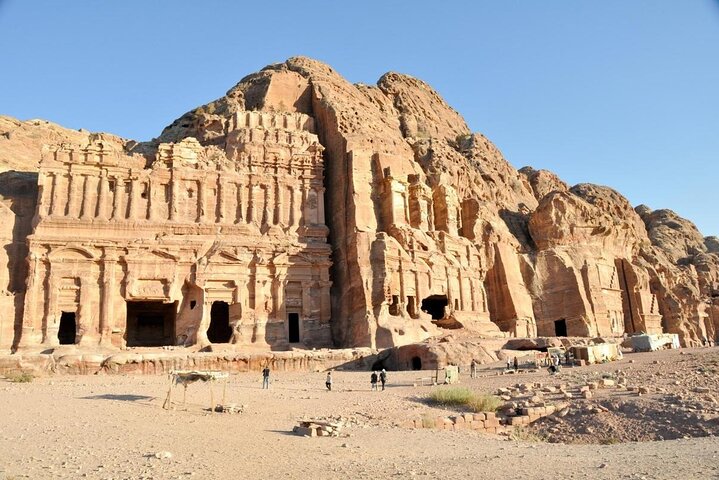
Royal Tombs
The Royal Tombs in Petra are a cluster of grandiose funerary monuments that reflect the wealth and architectural prowess of the Nabatean civilization. Situated on the eastern cliff face of the city, these tombs include the Urn Tomb, the Silk Tomb, the Corinthian Tomb, and the Palace Tomb, each distinguished by intricate carvings and impressive facades. Constructed between the 1st century BC and the 2nd century AD, these tombs were designed to house the remains of Petra’s elite. Their elaborate designs showcase a blend of Nabatean, Roman, and Hellenistic architectural influences.
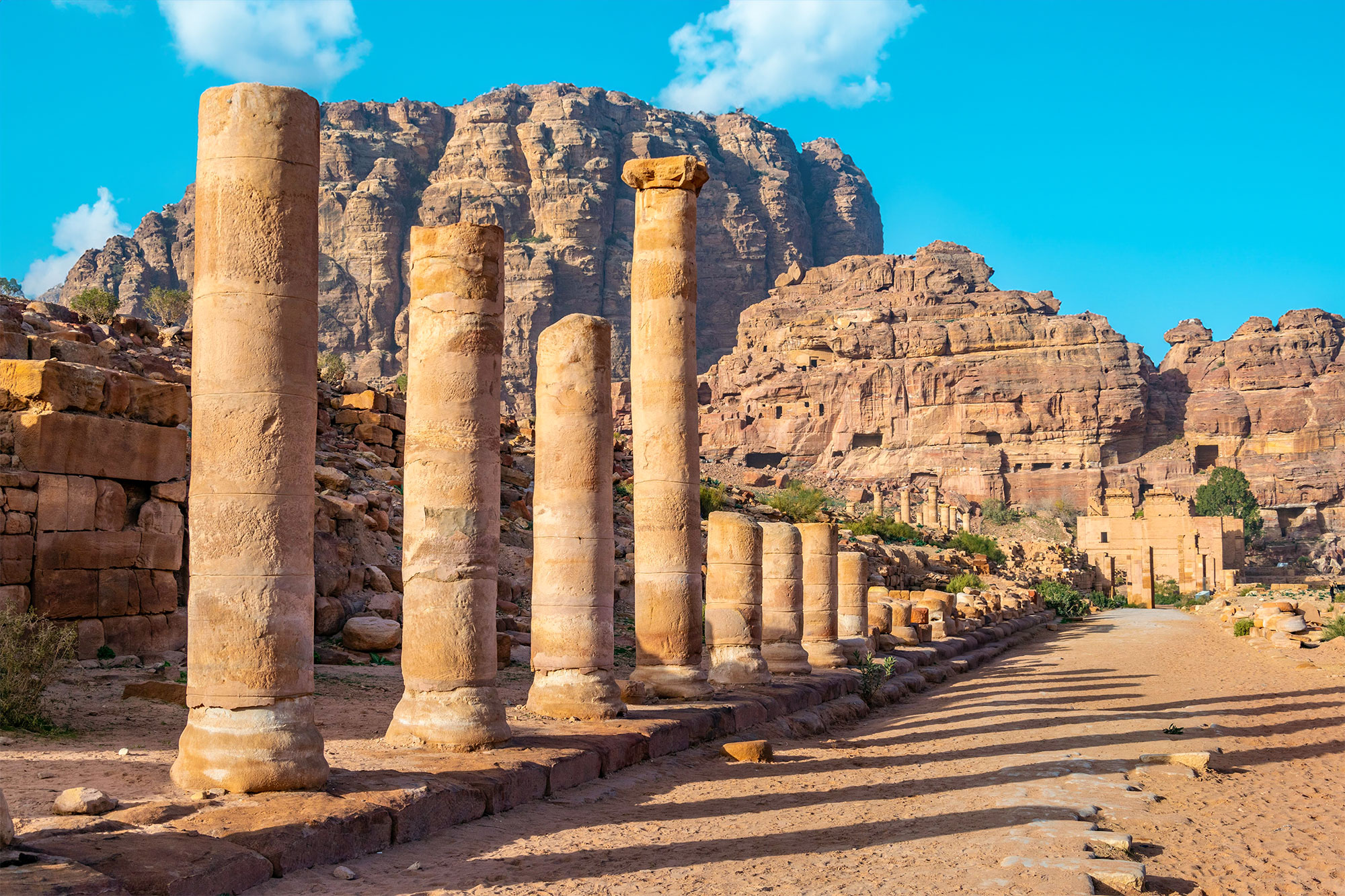
Colonnaded Street
The Colonnaded Street is a testament to its vibrant commercial and social life. Constructed during the 1st century AD under Roman influence, this grand avenue stretches through the center of Petra, flanked by rows of columns that once supported covered walkways. The street was lined with shops, markets, and public buildings, serving as a hub for trade and daily activities. Today, remnants of these structures and the street’s original paving stones offer a glimpse into the city’s prosperous past. Walking along the Colonnaded Street, visitors can imagine the lively atmosphere of Petra during its peak, surrounded by the striking backdrop of its rose-red cliffs and monumental architecture.
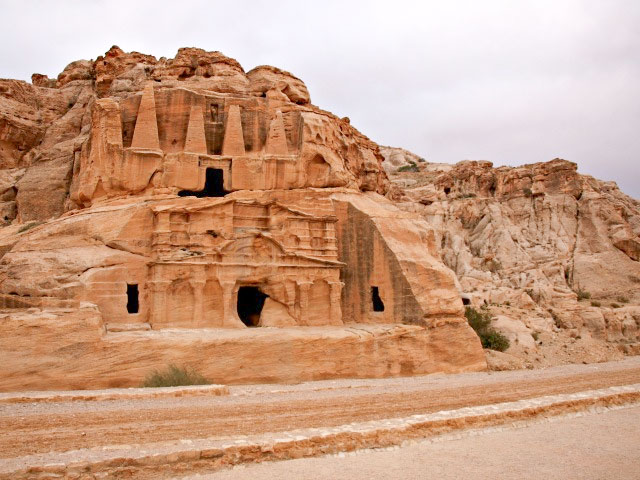
Obelisk Tomb & Bab as siq triclinium
The Obelisk Tomb and Bab as-Siq Triclinium in Petra are remarkable examples of the city’s funerary architecture, offering insights into Nabatean burial customs and religious practices. The Obelisk Tomb, dating back to the 1st century AD, is named for the four towering obelisks that crown its façade, symbolizing the eternal connection between heaven and earth. Nearby, the Bab as-Siq Triclinium, also known as the Triclinium of the Royal Tombs, features a rock-cut dining area adorned with intricate carvings and reliefs, offering a glimpse into the Nabatean funerary feasting tradition. Both monuments are located near the entrance of Petra’s Siq, serving as imposing gateways to the ancient city and captivating visitors with their rich historical and architectural significance.
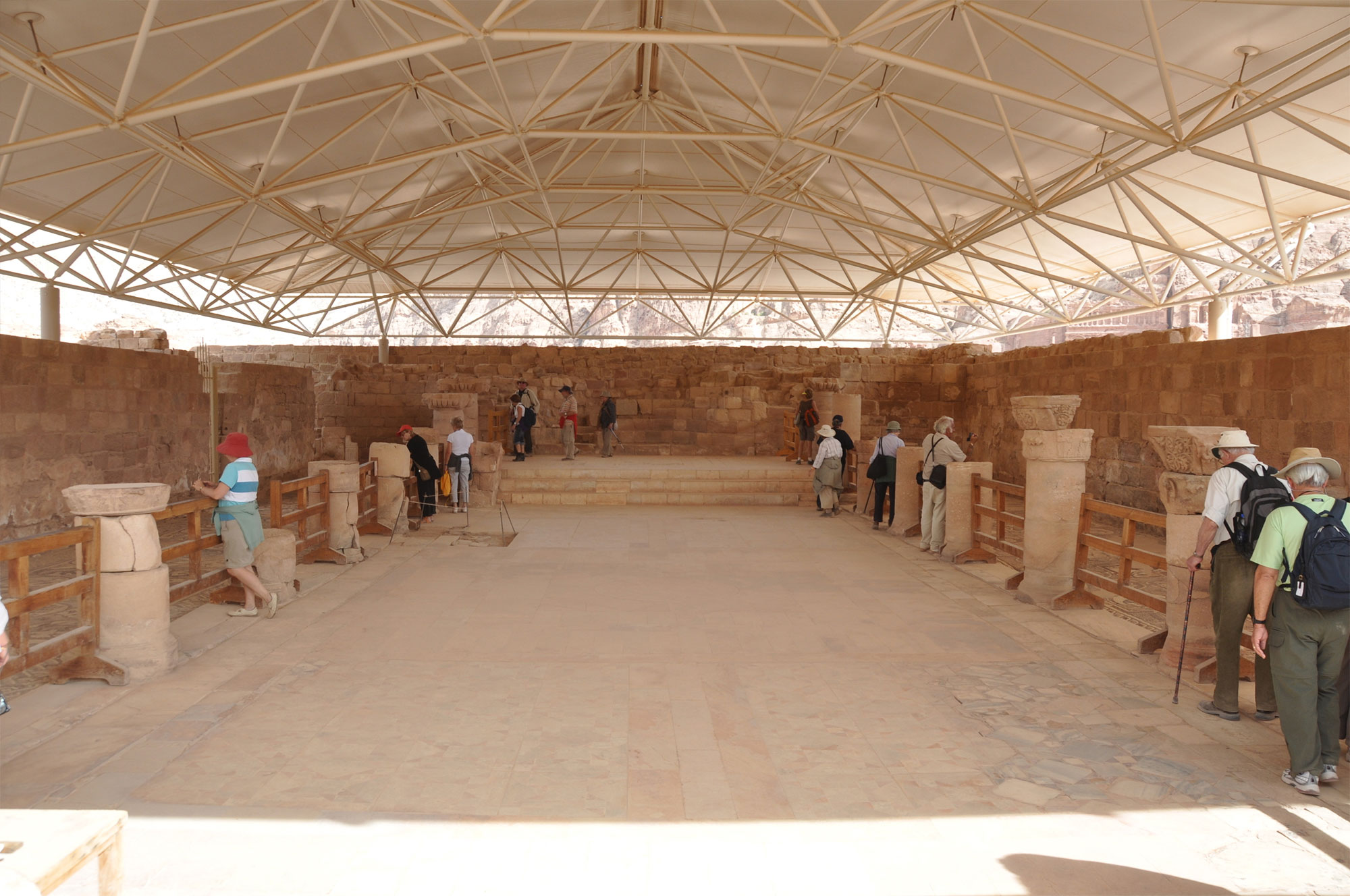
Petra Church
Dating back to the 5th century AD, this church stands as a testament to Petra’s transition from a Nabatean trading hub to a center of Byzantine Christianity. Located near the Royal Tombs, the Petra Church features a basilica-style layout with a central nave and side aisles, along with intricate mosaic floors depicting geometric patterns, biblical scenes, and Christian symbols. Excavations at the site have uncovered remnants of a baptistery, a courtyard, and various chapels, highlighting the church’s importance as a religious and cultural center during the Byzantine era. Today, the Petra Church stands as a poignant reminder of Petra’s rich and diverse history, attracting visitors from around the world with its architectural beauty and historical significance.
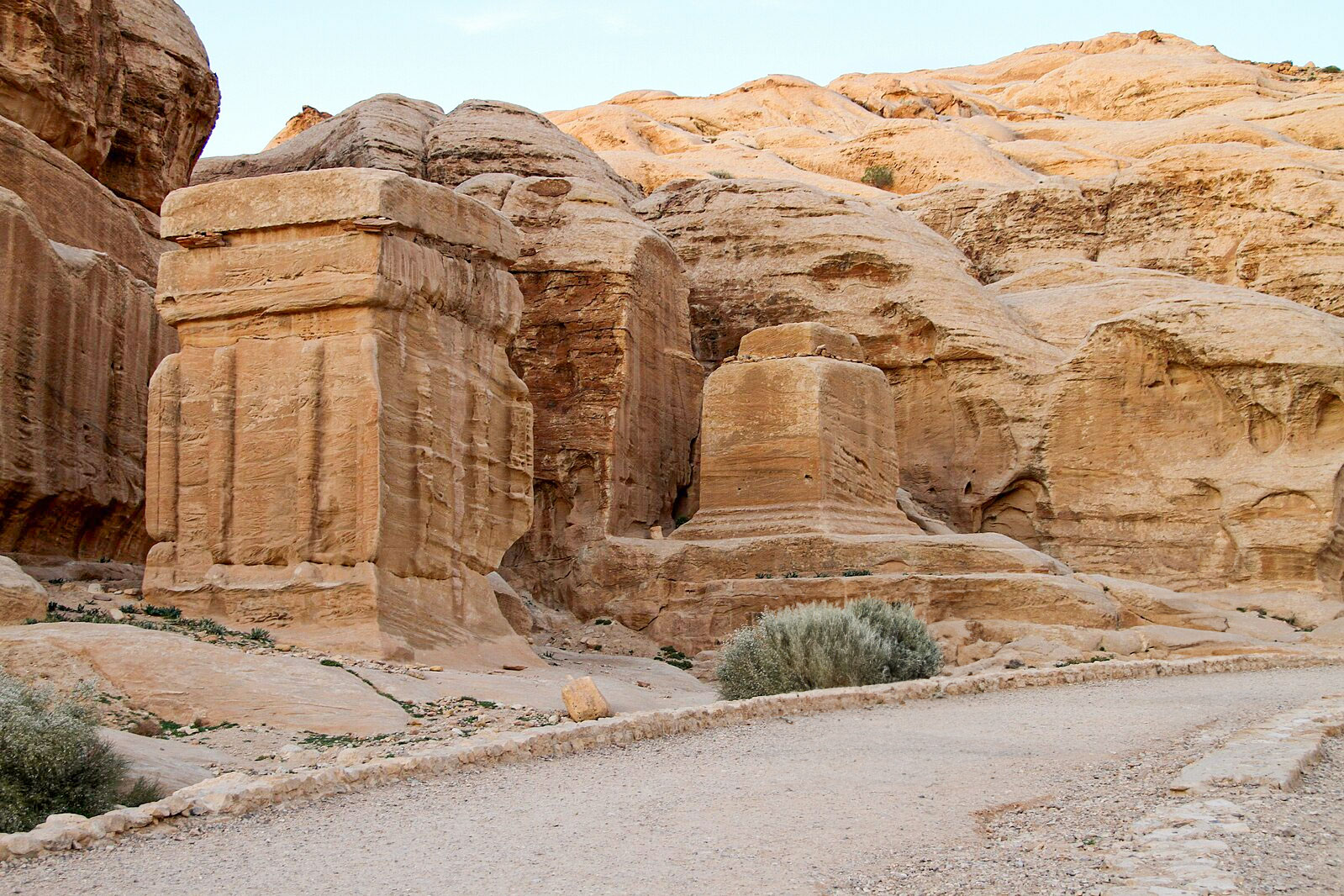
Djinn Blocks
These massive stone blocks, located near the entrance of the Siq, are believed to have been left unfinished by the Nabateans. However, their exact purpose and origin remain a subject of debate among historians and archaeologists. Some theories suggest that they were intended for use in a monumental construction project, while others speculate that they may have been part of a quarrying or sculpting operation. The name “Djinn Blocks” derives from local Bedouin folklore, which attributes their creation to supernatural beings.
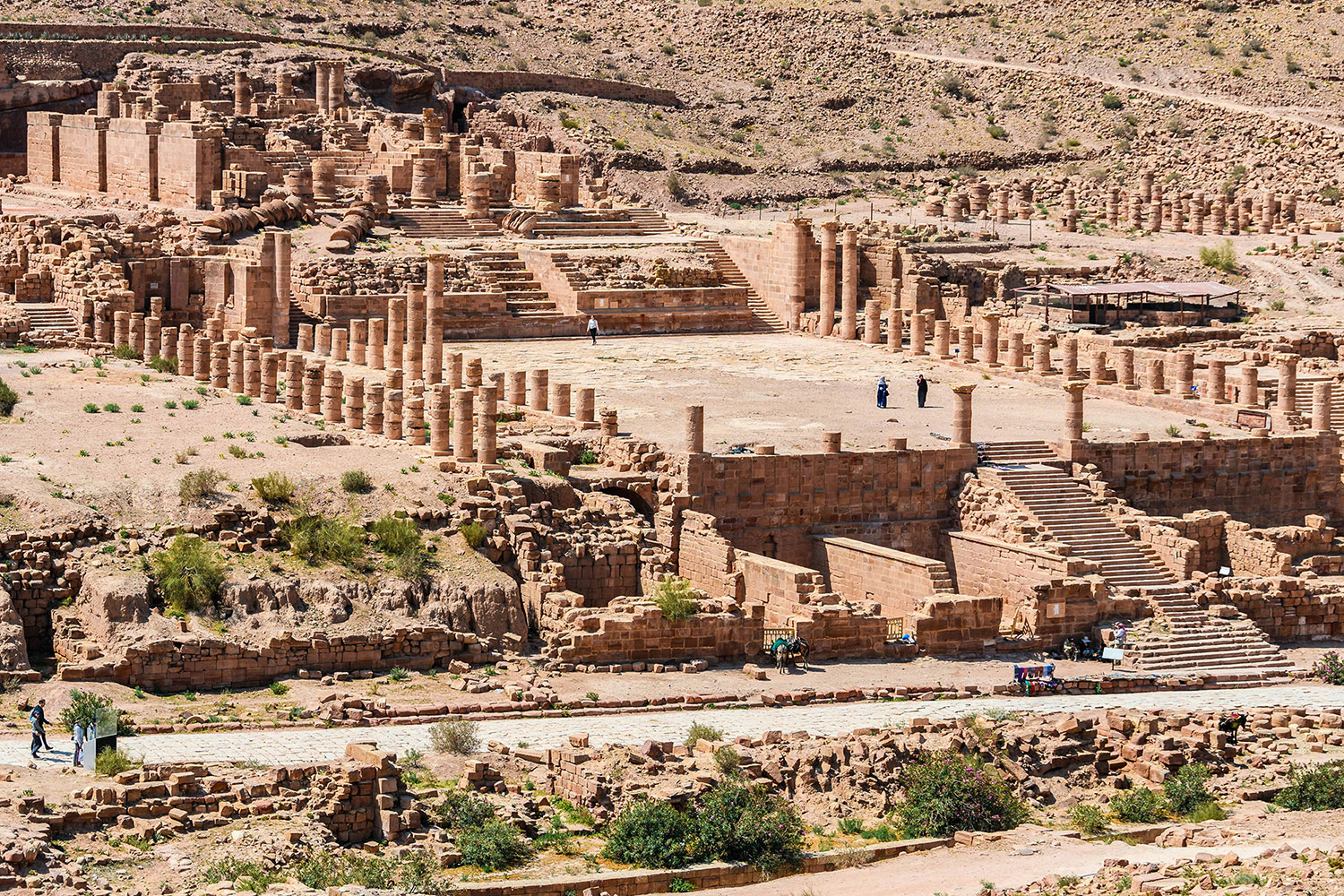
The Great Temple
Dating back to the 1st century BC, this imposing structure served as the focal point of religious and civic life in Petra. The Great Temple complex includes a monumental staircase, a large courtyard, and various chambers and halls adorned with intricate architectural details and decorative elements. Excavations at the site have revealed evidence of religious rituals, including altars, sacrificial pits, and inscriptions dedicated to Nabatean gods.
Wondering what to wear or when to go? Check our Jordan guide to discover more!
Tours in Petra
More things to do in Jordan
The Siq
The Siq in Petra is a mesmerizing, narrow gorge that serves as the dramatic entrance to the ancient Nabatean city. Stretching for about 1.2 kilometers (0.75 miles), the Siq is flanked by towering sandstone cliffs that rise up to 80 meters (262 feet) high. Walking through the Siq is an awe-inspiring experience as its winding path reveals beautiful rock formations, ancient carvings, and remnants of water channels. The journey culminates in a breathtaking view of Al-Khazneh (The Treasury), Petra’s most iconic monument, suddenly emerging through the narrow opening at the end of the gorge, leaving visitors with an indelible first impression of this UNESCO World Heritage Site.
SUBSCRIBE!
Are you a globetrotter? Join our platform and get exclusive travel tips, getaways and more!


